#vicis aeternum
Explore tagged Tumblr posts
Text
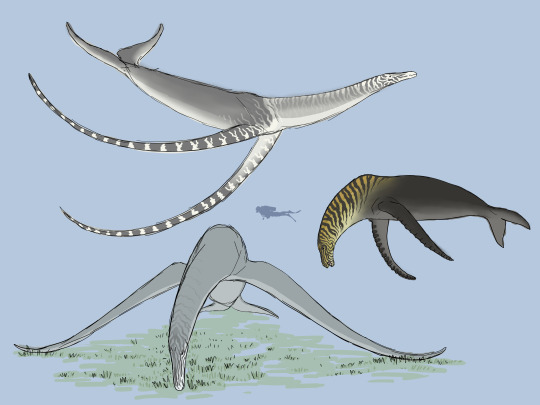
Some sketchy concept stuff that I'm posting because I liked it but couldn't be bothered to refine it into an actual artwork.
These submarine behemoths are the Mermares (Clade Euhippocampiformes), secondarily aquatic descendants of the domestic donkey. The group first appeared around 29 million years post-cataclysm, in the late Nerian stage of the Diluvian period. They evolved from an animal called the Seabra, a descendant of the Donkey which adapted to exploit a niche with, thus far, zero competition - that of a large marine herbivore.
On earth, marine ecosystems are notable for the distinct lack of vascular plant life, a condition caused by a number of factors - most notably the osmotic stress caused by the saltwater. Most photosynthesis is carried out by algae. On Spero, however, things are different. Because Spero's oceans were generated relatively recently, from extraterrestrial ice particles, there just hasn't been enough time for erosion and the water cycle to deposit dissolved minerals in the water. As a result, Spero's seas are made of freshwater - a much more tolerable condition for most plants, and thus the diversity of marine vascular plants is much, much higher than on earth. Also, due to the flatness of the flooded landscape and lack of any real tectonic features, enormous swathes of the seabed lie within the photic zone, less than 200 meters from the surface. Thus, endless expanses of marine grasslands - the "seagrass prairies" - extend from the shore, often for hundreds of miles before the water finally gets too deep for photosynthesis to occur.
All of this plant life is an extremely attractive prospect for herbivores, and it was likely what drew the ancestral Seabra to forage in shallow coastal meadows in the first place. But as the oceans got deeper and life adapted, the Seabra had to adapt in kind - their hind legs rotated backwards to act as a pair of propulsive flukes, their forelimbs developed into steering flippers, and their nostrils retreated to sit on their foreheads.
One notable feature of the Mermares is hyperphalangy, a condition where the fingers have too many bones. It's very common in large marine tetrapods in Earth's history - whales and dolphins, Ichthyosaurs, Plesiosaurs, and Mosasaurs all exhibited hypoerphalangy to some degree - and seems to be associated with the specialization of the limbs into flippers. We would expect to see similar patterns in marine lineages on Spero. What's unique about the Mermares, however, is the sheer number of extra phalanges in the finger; at least fifteen in the shorter-finned species, and more than thirty in the longest-finned forms. And because Mermares - being equids - only possess one digit per limb, the result is a single long chain of flat, squarish bones which, in some cases, can reach over forty feet long - the longest arms ever to exist.
These ridiculous appendages produce a lot of drag and are merely adequate for steering and stabilization. So why do the Mermares have them?
The answer is that they're weapons. And particularly devastating ones, at that.
Mermares use their flagellating flippers as bludgeons, against both predators and conspecifics. The flippers are connected to powerful neck muscles and can be swung forward with impressive force; combined with a well-timed twisting of the giant horse's torso, the huge flippers can impact hard enough to shatter bone and pulverize flesh. The flippers themselves do not escape unscathed, and older individuals often have scarred or mangled flipper-tips from numerous battles over the years; but it's a small price to pay for survival.
When not being used against their enemies, the flippers may be folded back against the sides of the animal to reduce drag, or used as props to keep the animal's belly up off the seabed when feeding. Mermares spend up to 18 hours per day grazing, using their long neck to crop aquatic grasses and other vegetation in a wide arc without moving their bodies and occasionally dipping up to the surface to breathe. Mermares are keystone species in the seagrass prairies; as hindgut fermenters, they are not as efficient at processing plant matter as ruminants like goats, and produce large amounts of nutrient-rich dung which acts as fertilizer for the meadows and helps keep the environment productive. The dung also acts as food for a variety of fish and invertebrates.
Let's look at some of the Mermare's diversity, shall we?
Drepanarion (center right) One of the smaller Mermares, Drepanarion nonetheless grows to nearly 12 meters (39 feet) long. It is immediately recognizable by the bold black-and-yellow striping on the heads and necks of the stallions, and by the tall, narrow nuchal crest which extends from the withers and makes the stocky body look even more powerful. Unlike most other Mermares, which live in small groups of less than ten individuals, Drepanarion can be found in herds of over a hundred in the seagrass prairies of the Savanian (41 - 50 million years post-cataclysm). These nomadic throngs graze patches of seagrass nearly to the roots before moving on, giving the ecosystem time to regrow before returning in a few years' time. Drepanarion exhibits the most extreme sexual dimorphism of any Mermare, with stallions being both larger and more brightly coloured than mares; during the annual rut, males will fight each other in brutal bludgeoning matches to establish dominance and secure mates. To this end, they have some of the most extreme flipper anatomy of any Mermare; though not especially long (indeed, they have the shortest flippers of any derived genera), each phalanx bone has a protruding bony tubercle on the anterior edge which extends into a keratinous knob. These knobs both protect the flipper during combat and focus the force of the blow into a smaller area, dealing more damage.
Hipposeidon (bottom left) First appearing in the early Imberian (50 million years post-cataclysm), Hipposeidon is the largest of all Mermares and, indeed, the largest animal ever to exist on Spero, with stallions regularly reaching over 24 meters (80 feet) long (mares are slightly smaller). Extremely large specimens may even reach 30 meters (100 feet), although this is rare. This ludicrous size - nearly rivaling even the mighty Blue Whale of Earth - is possible only due to the sheer abundance of its food. Hipposeidon appears at the height of the seagrass prairie's extent, and can pack away almost 900 kilograms (1900 pounds) of seagrass per day. This superlative food requirement has important consequences for Hipposeidon's behaviour; this animal is migratory. Seagrass prairies are extremely productive ecosystems, but nonetheless Spero is a seasonal world; as the summer growth gives way to the winter die-back, the greatest of the Mermares must migrate across the equator to seek out a continuous food source to fuel its immense bulk. In this way Hipposeidon experiences a perpetual summer, interrupted only by the biannual migration from north to south and back again. Female Hipposeidon are pregnant for about one year, timing the birth of the single large foal with arrival to the feeding grounds; the six-meter-long foal enjoys a long childhood nursing and playing in shallow summer waters, gathering strength before making the long swim across the barren tropical zone to pastures new.
Bathypegasus (top left) The last and possibly the weirdest of the great Mermares, Bathypegasus is the only member of the clade which is not a grazer. Instead, it is a specialist feeder on pelagic, free-floating ferns. These ferns are a seasonal bounty, growing in huge numbers in the tropical summers of the late Imberian (60 million years post-cataclysm), where the planetary ring system shades out large portions of the planet for half the year. A close relative of Hipposeidon, Bathypegasus has left its ties to the seabed behind, becoming a fast, powerful swimmer which spends most of its life far above the sea floor. Its flippers have adapted to be even more ludicrously long - the longest forearms of any animal, ever, with each one measuring nearly 14 meters (45 feet) in length and each containing at least 35 individual bones. No longer used to prop the animal up off the seabed, these whiplike flippers are narrow and streamlined and can be whipped through the water at speeds of nearly 20 meters per second (that's over 40 mph) - the most extreme weaponry of any Mermare, and used to great effect against predators. Bathypegasus, like Hipposeidon, is migratory, following the blooms of pelagic ferns across Spero's oceans. Thanks to this midwater diet it is the only genus of Mermare to survive past the mid-Imberian extinction, when rising sea levels and steepening coastal slopes caused the seagrass prairies to disappear. Bathypegasus finally died out in the Ultimoxerian stage, around 75 million years post-cataclysm, the last and weirdest of the giant marine horses.
#spec bio#spec evo#speculative biology#speculative evolution#Vicis Aeternum#Spero#seed world#equid#donkey#they're like if a whale and a horse had a baby and that baby was somehow also a diplodocus
867 notes
·
View notes
Text
The Sunnydale Herald Newsletter, Tuesday, October 8
Riley: Well, hey! Willow – and Xander, right? Jeez, what are the chances, huh? Yeah, I was just passing by when I thought I heard people inside. Willow: Passing by in your GI Joe outfit? Buffy: No offence, but you do look wicked conspicuous. Riley: I do? But it’s... paintball! Yeah, I was playing paintball. And then the aftershocks... Xander: So you’re one of the commando guys, huh? Riley: Oh, no, no, no, no. Commando? No, I mean... Don’t I know you? Spike: Me? (Affecting a bad Texan accent) No. No, sir. I’m just an old pal of Xander’s here.
~~Buffy Episode #67: "Doomed"~~
[Drabbles & Short Fiction]

Redemption (Buffy/Spike, M) by Spikelover4ever
The Body Switch (Buffy/Spike, E) by Spikelover4ever
i think i was born bored (Illyria/Fred, E) by natalieisfreezing
Pawn (Angelus/Willow, T) by MedeaBtVS
Knight (Angelus/Willow Rosenberg, T) by MedeaBtVS
Rook (Angelus/Willow Rosenberg, T) by MedeaBtVS
Bishop (Angelus/Willow Rosenberg, T) by MedeaBtVS
Queen (Angelus/Willow Rosenberg, T) by MedeaBtVS
King (Angelus/Willow Rosenberg, T) by MedeaBtVS
No Rest for the Wicked (Willow, Spike, T) by MedeaBtVS
Just Between Us (Did the Love Affair Maim You Too?) (Buffy/Spike, T) by thoughtsofahouseplant
[Chaptered Fiction]

Situation Normal - All Faithed Up - Chapter 10 (Buffy/Faith, M) by QuillBard
Masters & Minions 5: Oil and Blood Ch. 1-6/6 (COMPLETE) (Angel/Willow/Spike, E) by MedeaBtVS
Masters & Minions 6: Coming of Age Ch. 1-10/10 (COMPLETE) (Angel/Willow Rosenberg/Spike, E) by MedeaBtVS
Buffy s7 Missing Scenes Ch. 1 (Ensemble, T) by Oliver (TaruUchiha)
Greatest Love Story - Postlude Ch. 18 (Angel/Spike, M) by FalseGinger
In the Company of Witches and Slayers Ch. 161 (Willow/Tara, E) by VladimirHarkonnen (TheLightdancer)
Sharing is Caring Ch. 2/2 (COMPLETE) (Buffy/Angel, E) by fatalfae
Veni, vidi, vici Ch. 2 (Angel/Cordelia, T, Harry Potter xover) by LadyInBlackandWhite
Aegis Ch. 22 (Xander, T, multiple xovers) by dogbertcarroll, Narsil
Forged in shadows Ch. 3 (Angel/Lindsey, M) by CloudSeeker
Horrorshow Ch. 27 (AtS Ensemble, multiple pairings, E) by vampbrat

Unholy Matrimony, Chapter 12 (Buffy/Spike, ) by CheekyKitten
The Neighbor's Point of View, Chapter 137 (Buffy/Spike, T) by the_big_bad
Unconditional, Chapter 10-11 (Buffy/Spike, E) by Blade Redwind

Linchpin, Chapter 6 (Buffy/Spike, E) by hulettwyo
Revelations, Chapter 5 (Buffy/Spike, E) by Niamh

Why Me? Ch. 12 (Buffy, G, Lilo & Stitch xxover) by JoeB
I Shall Dress In Aeternum Ch. 2 (Buffy, M, Highlander xover) by BlueStories
[Images, Audio & Video]

Artwork:Drusilla by tiaragloryart
Artwork:Spike by emihotaru
Artwork:Dear Auntie Liz and Uncle Elly from ff: «A Different Kind of Hell» by OffYourBird by flyora
Artwork:Der Kindestod by onedrawsoverthecuckoosnest
[Reviews & Recaps]

PODCAST: ATS 303 - That Old Gang of Mine by Another Buffy Podcast
[Community Announcements]

Tuesday Prompt: Never Met in Canon by comment_fic
[Fandom Discussions]

you can tell joss whedon and his writers don’t respect gay men by youn8ss-2
Vampire Hair Growth by aphony-cree
candy liked season 6 and defended it on the basis that it “deconstructed” spuffy. by becomingpart2

What If: Glory had killed Tara by Multiple Authors

Anya's response in The Body by Stoney
The impact of loss and trauma on Angel's outlook by Stoney

How would Buffy do up against the demons in Supernatural? by jdpm1991
Poor Cordelia's hair by enrichyournerdpower
Can someone explain.. by hakuinzenji5
Angel's curse makes sense to me by spectacleskeptic
Buffy and Spike final moments by SafiraAshai
Poster on Giles’s wall by tomnickles
Worst episode. Can’t get through it. by gigabowserq
Favorite Buffy Set and why? by Rich_Librarian9956
Was the Angel TV show actually a big deal at the time? by shukii89
Darla, Angel, Drusilla, Spike Vampire Family Tree by authenticriver
Are there any good ways to watch this show? Would love an upscaled 4:3, anyone know of one? by Content_Ad9867
Is it a mistake to buy Buffy on streaming? by BC_Raleigh_NC
Do you like my masks, aren't they pretty? They raise the dead! by InfiniteMehdiLove
Funko Pops by Fun_Introduction4434
They did our girl Anyanka dirty by lmeyer64
Moo and gender equal parenting... by Zinkerst
S3, Ep 3: Faith, Hope & Trick by yrboyfriend
Noticed an identical prop in two of my favorite shows by TryLettingGo
My Thoughts After a Recent Rewatch by Morrowindsofwinter
What's the worst thing this character has done: Buffy Summers by HereLiesMyFinalWor-
We Saw You From Across the Bar and Really Dig Your Vibe by The-Sarlacc-Pit
Caleb by moses616
Buffy vs. Faith by moses616
What are your thoughts on Season 3? by AIaddinSane
Faith, Hope, Trick question by JehovahJireh222
I just finished my second rewatch! It’s getting better every time? by duvet-cover
I have a question… by duvet-cover
Favorite Lindsey episodes/moments by AnnualRemote2406
Help me choose episodes to rewatch! by kitkatbatman
Submit a link to be included in the newsletter!
Join the editor team :)
8 notes
·
View notes
Text
Beautiful Latin phrases ~ part 2
• veni, vidi, vici - I came, I saw, I conquered.
• vivamus, moriendum est - let us live, for we must die.
• ergo dum me diligis - so long as you love me.
• alis volat propriis - she flies with her own wings.
• sic mundus creatus est - thus the world was created.
• aut inveniam viam aut faciam - I shall either find a way or make one.
• mors certa, hora incerta - death is certain, its hour is uncertain
• mors mihi lucrum - death to me is reward
• aeternum vale - farewell forever
• mors ultima linea rerum est - death is everything’s final limit
• nascentes morimur - from when we are born, we begin to die
• mors vincit omnia - death conquers all
• omnia mors aequat - everything is equal in death
• tempus edax rerum - time, devourer of everything
#latin#latin phrases#history#language#words#beautiful words#original words#sayings#popular#lit#literature#classic#classics#Dark Aesthetic#dark academia#dark academia aesthetic#dark academia books#dark academia quotes#dark academia reading#studyspo#studyblr#study blog#studygram#study aesthetic#quotes#quote#quoteoftheday#beautiful quote
4K notes
·
View notes
Text
Latin Words and Phrases
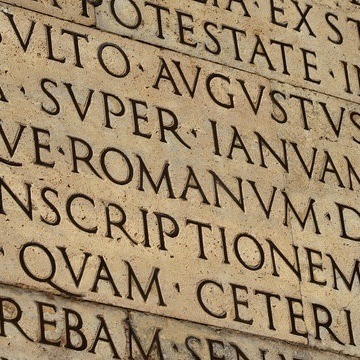
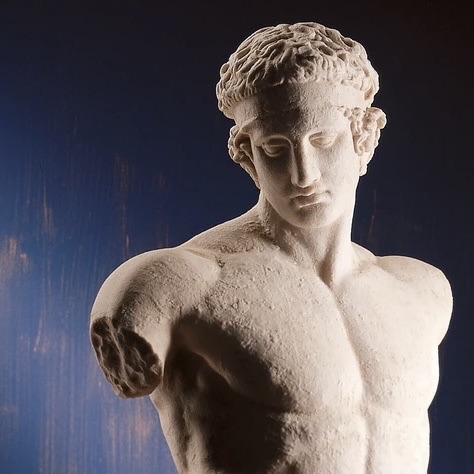
veni, vidi, vici - I came, I saw, I conquered.
vivamus, moriendum est - let us live, for we must die.
ergo dum me diligis - so long as you love me.
alis volat propriis - she flies with her own wings.
sic mundus creatus est - thus the world was created.
aut inveniam viam aut faciam - I shall either find a way or make one.
mors certa, hora incerta - death is certain, its hour is uncertain
mors mihi lucrum - death to me is reward
aeternum vale - farewell forever
mors ultima linea rerum est - death is everything’s final limit
nascentes morimur - from when we are born, we begin to die
mors vincit omnia - death conquers all
omnia mors aequat - everything is equal in death
tempus edax rerum - time, devourer of everything
poeta nascitur, non fir - poets are born, not made
luctor et emergo - I struggle and emerge
armor vincit omnia - love conquers all
pulvis et umbra sumus - we are dust and shadows
Ad hoc: To this
Alibi: Elsewhere
Amaritudo - Bitterness
Amo: Love
Astrum - Star/Sky
Basium - Kiss
Bona fide: With good faith
Bonus: Good
Carpe diem: Seize the day
De Facto: In fact
E.g.: For example
Ego: I
Ergo: Therefore
Et cetera: And so on
Excrucior - I am tortured
Extra: In addition to
I.e.: That is
Impromptu: Spontaneous
Intro: Within
Multi: Many
Per se: In itself
Pro bono (publico): For the good (of the public)
Quid pro quo: Something for something
Re: About
Semi: Half
Sentio - I feel
Sepulcrum - Tomb
Status quo: Existing state of affairs
Verbatim: In exactly the same words
Versus: Against
Vice versa: The other way around
Volatus - Flying
#latin phrases#latin quotes#latin words#latin translation#just writer stuff#writing resources#latin language#language resources#dark academia#aspiring author#language history#literature#aspiring poet#aspiring novelist#classics#ancient world#ancient rome
348 notes
·
View notes
Text

Today's church notebook doodle is a family of Mermares fleeing from a predatory Akhlut. The stallion's elongated flippers are raised in defensive posture, ready to whip back and hit the giant marine dog in the face if he gets too close.
#my art#notebook doodles#memares#akhlut#speculative evolution#speculative biology#spec evo#spec bio#vicis aeternum
52 notes
·
View notes
Text

Behold, a creetchur
Meet Stecoteuthops stictis, the "spotted standing squid-face". It's one of the most important creatures for my in-the-works Spec project. Basically the premise is that many years in the future, humanity colonized a distant desert planet (Spero) with the intent on terraforming it to become a new colony. However, something went horribly wrong, and humanity was wiped out, leaving behind only the livestock and crops they brought with them. This transitional form lives about 60 million years post-cataclysm and is a descendant of the Dromedary Camel (Camelus dromedarius).
Stecoteuthops is part of a particularly successful radiation of camels which possess subcutaneous osteoderms for defense against predators. In this genus, the osteoderms along the midline of the back have formed tall struts which support a decorative sail of skin. This sail is used for display and also to break up its outline in its woodland home, helping the animal to hide from predators; males have much taller sails than females.
This animal is most similar in form and function to the ancient stem-camel Anoplotherium, possessing a muscular, elongated tail which is used to support the body while browsing. Their pincer-like forelimbs can be used to grasp branches and pull them down to access fresh fruits and tender new leaves. They are obligate herbivores, and fruit forms over 70% of their diet - their dextrous, almost tentacular lips are used to grasp and manipulate ripe fruit, and are lined with cornified papillae to ensure a firm grip. Their fur is greenish-blue, the result of a novel pigment derived from Biliverdin which evolved near the very base of the camel radiation, shortly after colonization.
Stecoteuthops is important to this world because it represents a transitional form between large, ground-dwelling camels and smaller, arboreal forms. Although Stecoteuthops itself does not climb, its grasping feet, small size, and muscular tail are all preadaptations for arboreality, and its descendants will clamber about the canopy in search of fresh fruit. It is this lifestyle which will enable the camels to survive the coming mass extinction, priming them to diversify into one of the dominant clades on the planet Spero.

#speculative biology#spec bio#speculative evolution#spec evo#speculative fiction#creature design#creature#seed world#Vicis Aeternum#Spero
151 notes
·
View notes
Text

Welcome to Spero
Exoplanet Ahuizotl 593-d is about 15 light-years from Earth, located in the habitable zone of a yellow dwarf star much like our own. It is a rocky world, with an axial tilt of 7.2 degrees and a diameter of just over 12,000 km. It has a single large moon, somewhat smaller than earth's and very different in origin and composition; this moon is a recently-captured long-period comet, composed mostly of water ice beneath a dark protective layer of organic dust. Ahuizotl 593-d was renamed to Spero (meaning "hope") when it was chosen as a candidate for terraforming and colonization.
Prior to human arrival, Spero was a dead world. Though once tectonically active, it ceased to be so long before humanity arrived, and countless aeons of erosion have ground down the mountain ranges and filled in the ocean basins with sediment. Where once tall mountains stood proudly, small, wind-blasted rocks are all that remain; and where once vast oceans surged, endless fields of sand dunes stand still and lifeless. The only true topography that may be found is the rims of innumerable impact craters, slowly being worn away by the ravages of wind and sand. The largest of these is over 1,000 km across, and is relatively young, at a mere 80 million years old; It has not had time to erode away as completely as some of the other craters, and its eastern rim contains mountains that are much higher than anywhere else on the planet - nearly 3,000 meters high.
The oceans are not completely gone - they are buried, to be certain, but the water still exists deep beneath the sediment. In certain places, scattered across the globe, ancient seawater seeps to the surface, forming saltwater oases - in the depths of the largest crater, these springs seep into the basin to form a permanent lake. However, by far the largest body of water is the Mare Vagus, the so-called "wandering sea": a shallow, hypersaline body of water which travels around Spero's lowlands, propelled by the forces of erosion and deposition. On the windward coast, soft rock and sediment are slowly carved away, only to be re-deposited as sand or silt on the leeward coast; harder rock resists erosion, and may deflect the Mare's trajectory against the wind to the north or south. in this way the seas move across the planet, leaving behind them a trail of salt crystal evaporites that can be seen from space. These bodies of water fuel a small but consistent water cycle - a few freshwater rivers snaking down from the highlands are fed by rainfall.
Despite the bleakness of the landscape, the planet is habitable. The air is breathable, the rivers drinkable, the soil nontoxic, and the sun is almost identical to our own. In a universe where habitable planets are exceedingly rare, Spero is a veritable oasis, and within ten years of the planet's discovery humanity was already putting together a plan for colonization. However, the sheer distance from earth to Spero makes for an imposing barrier; the fastest starships in the human fleet (at 1/6th the speed of light) would have to travel for 95 years to reach it. It would be two hundred and fifty years between the arrival of the first probes and the arrival of humanity on the planet's surface. And humanity did not arrive alone. They brought with them their crops, their livestock - everything needed to prepare a planet for permanent human habitation.
Transporting plants and animals across interstellar space is not an easy feat. Due to the 95-year time gap between launch and arrival, everything living must be either put in cryogenic stasis or maintain a breeding stock on the spaceship for the duration of the flight. Since storage space is a limited resource on ships and carrying that many moving animals, plants, and people (not to mention food and water and life support systems) would be unimaginably expensive, cryostasis was by far the preferred option. For most plants and some animals, this made transport downright easy; simply keep the desiccated seeds or cysts into a low-temperature freezer and thaw them out upon arrival. Thousands of seeds could be transported this way while barely taking up any space at all. Hundreds of species from over 450 different families were brought to Ahuizotl.
Animals, on the other hand, needed a little more consideration. Cryogenic stasis is a complicated affair (though much simpler than transporting moving, breathing animals for 95 years) and requires some specialized equipment. Multiple tanks of liquid nitrogen were needed for every individual animal, plus the metabolic suppressors and the actual stasis chamber itself. For an average-sized human this resulted in a set of equipment which weighed some six hundred pounds and took up almost 2.5 cubic meters of cabin space. For a fully grown cow or camel, the requirements were even more ludicrous.
Fortunately, these huge apparatuses could be shrunken, if the animals themselves were also shrunken. If transported as embryos, with development completed in artificial wombs upon arrival to the planet, each individual animal only took up one-eighth of a cubic meter of space. This was much more reasonable, and so many more individuals could be transported, enough to preserve genetic diversity for multiple species. Even so, space was at a premium, and only 18 species of animal were introduced (three of which could undergo cryptobiosis and were simply chucked in the freezer with the seeds).
Colonization occurred in several waves; the first wave included bacteria, algae, and certain lichens and fungi, and began the process of terraforming by beginning soil production and establishing the foundation of the artificial ecosystem the colonists hoped to create. The second wave included more complex plants, including mosses and ferns, and the first animals - tardigrades, rotifers, and other small creatures which would recycle nutrients. Once these organisms were established and thriving (as determined by robotic probes), the third wave - including the first hardy crop plants, larger invertebrates, and the first fish - arrived. Finally, in the fourth wave, humanity arrived (accompanied by the remaining seed species) to be greeted by a thriving, if taxonomically limited, ecosystem.
~o~O~o~
Seed List
All species introduced to Ahuizotl underwent genetic manipulation and hybridization to increase hardiness and heterozygosity, maximizing chances of successful establishment and survival into the future. Species were chosen based on hardiness, adaptability, and – most importantly – usefulness to humans. The vast majority of plant species introduced were crops, producing food, timber, or other important products such as rubber and medicines. Animals were either livestock, herding animals, or detritivores necessary for healthy soils and nutrient cycling. Pest species were strictly avoided. Thanks to the extended time spent in cryogenic stasis (as well as close inspection and quarantining by scientists prior to freezing), diseases and parasites were almost completely eliminated.
(Plants not included in this list; there are too many to count. If it's reasonably hardy and useful to humans, it's safe to assume it was brought along.)

Domestic Goat ~ Capra hircus Cattle were rejected for colonization due to their size and feed requirements - the productive pastures needed to raise them effectively simple didn't exist. Goats were introduced instead, as they could survive better on the sparse scrubby vegetation which had been established by that point. Goats were introduced for their milk, meat, and leather, and for their ability to survive in harsh environments.
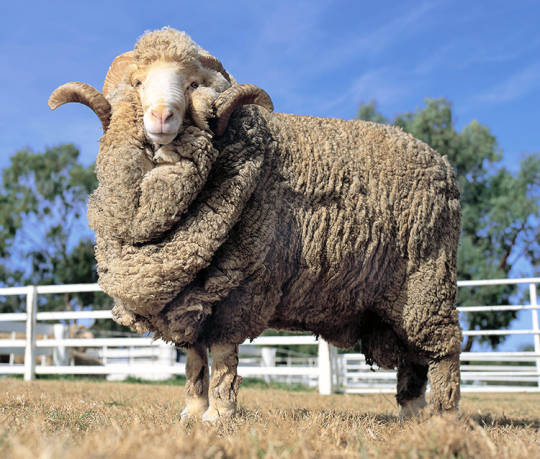
Domestic Sheep ~ Ovis aries Sheep were introduced for meat, milk, and (most importantly) wool. The sheep arriving on Ahuizotl were hybrids between several different wool-producing breeds, mostly of the fine-wooled merino type. Though unable to survive without human care due to the need for periodic shearing, the breeds chosen were very hardy and could survive in harsh climates.
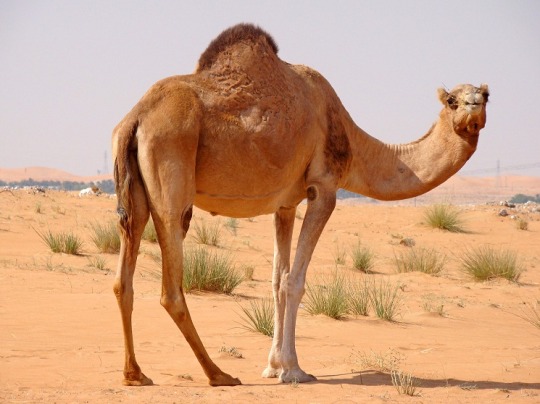
Dromedary Camel ~ Camelus dromedarius Camels were introduced as pack animals and long-distance transport to desert outposts. They were also used for milk production. Camels were chosen based on their hardiness, pre-adapted to the desert climate of Spero as they were; able to survive on very little food or water and carry heavy loads for long distances, they would be invaluable, especially since Spero had no oil or petroleum deposits to produce fuel for motorized vehicles.
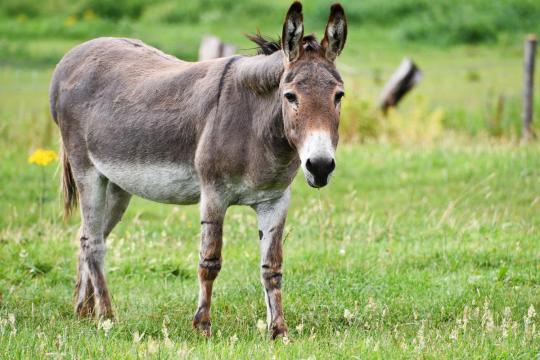
Domestic Donkey ~ Equus africanus asinus Horses were considered for colonization as a means of transportation on a world where fuel was a highly limited resource, but were ultimately rejected in favour of donkeys. Donkeys were smaller than horses, but much hardier and required fewer resources. Donkeys were also used extensively for plowing and transportation in pulling carts - they were also significantly easier to handle and more comfortable to ride than camels.

Domestic Dog ~ Canis familiaris Dogs were introduced as herding animals for goats and sheep, much more efficient than robotic substitutes. They had the added bonus of providing companionship to the human settlers (on a planet with a total population of less than 500 spread out over a vast area, loneliness was an ever-present problem). The dogs brought to Spero were all mutts with strong herding dog histories; border collies, blue heelers, and Alsatians were all prominently featured in the pedigrees.
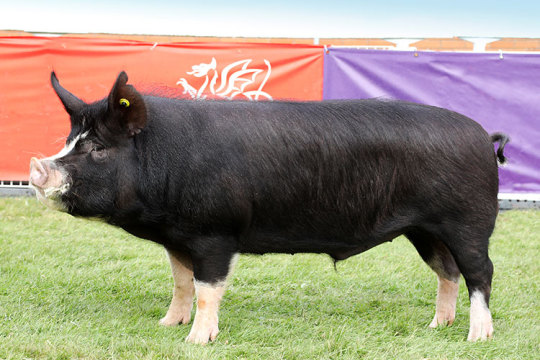
Domestic Pig ~ Sus domesticus Pigs were introduced mostly for their meat, but also for leather, manure, and disposal of organic wastes. They were also introduced for their unique ability to provide organs and tissues useful in medical applications, such as their heart valves. Hardy animals, able to survive on garbage, pigs were well adapted for surviving the turbulent early years of colonization.
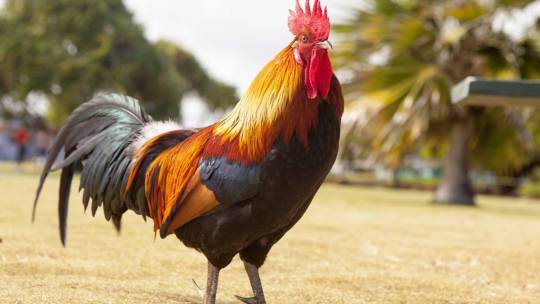
Domestic Chicken ~ Gallus domesticus Chickens were introduced for their meat and eggs, and their feathers were also used as a natural fiber for stuffing cushions and other necessary textiles. The chickens introduced were hybrid mixtures most similar to Indian and Polynesian breeds, but also included genes from western breeds such as leghorns, orpingtons, and wyandottes.
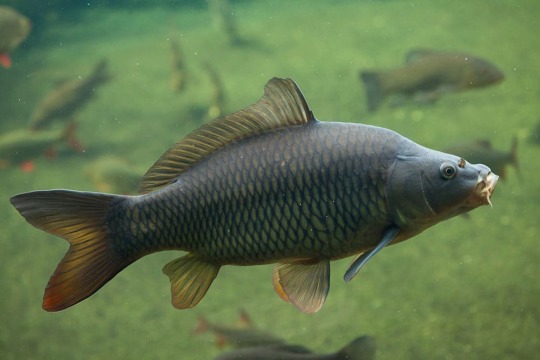
Common Carp ~ Cyprinus carpio Fish was a critical nutrient source for the developing world, rich in Omega-3 fatty acids that could not be efficiently produced by plants. Although humanity makes use of many kinds of fish, most species require more advanced ecological environments to thrive. Carp, on the other hand, don’t; and while not typically considered food fish by western cultures their meat is tasty and nutritious. It is their ability to thrive in low-quality environments which made them better choices for colonization than more popular fish.
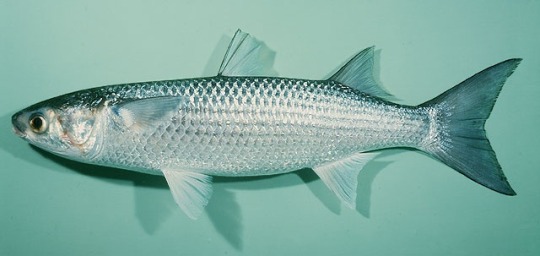
Flathead Mullet ~ Mugil cephalus Mullets were introduced for many of the same reasons as carp. Adaptable, hardy, and able to survive in a wide range of temperatures and salinities, their diet of algae and bacterial scum allowed them to thrive in Ahuizotl’s estuaries. Unlike carp they congregate in large schools and so can be harvested in large quantities, an invaluable attribute once large numbers of colonists began arriving and expecting to be fed. The mullet introduced to Spero were genetically modified to have a flexible life cycle and a broader tolerance of salinity; they do not need to return to saltwater to breed, though they can still survive there just fine.
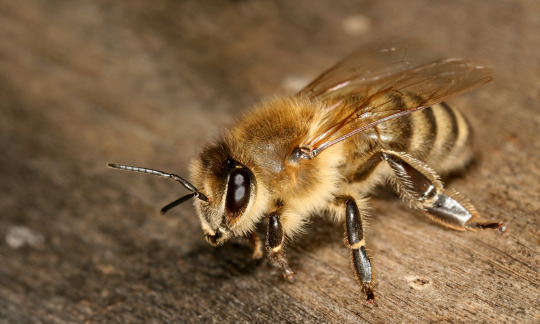
European Honeybee ~ Apis mellifera mellifera On earth, bees are of critical importance, pollinating a huge proportion of the crops we rely on to produce our food. Thus, bees were practically guaranteed to be included in the seed list. Not only do they pollinate flowers, but the honey, wax, and other products produced by beehives are valuable commodities. The bees introduced are exclusively from the Western subspecies (A. m. mellifera); this is to prevent aggressive and swarming behaviours exhibited by hybrid bees on earth.

Common Woodlouse ~ Armidillidium vulgare Woodlice were introduced as detritivores, aiding decomposition of excess organic matter and helping to keep soils fertile. This particular species was chosen based on its adaptability and hardiness compared to other woodlouse species, as they can tolerate drier conditions.
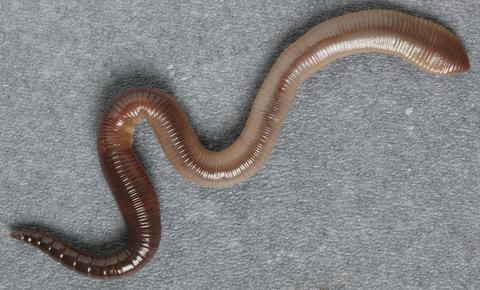
Common Earthworm ~ Lumbricus terrestris Earthworms were introduced to aerate the soil and help keep croplands healthy. They also help to remove organic detritus such as fallen leaves and help mix soils, bringing nutrients within reach of plant roots. This species was chosen due to its ability to survive in diverse habitats.
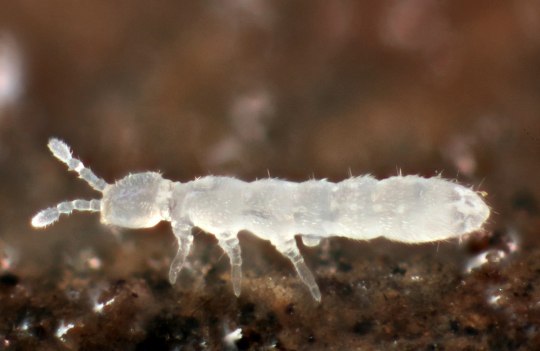
White Rat Springtail ~ Folsomia candida Springtails were chosen as detritivores, recycling organic matter and keeping the soils fertile and healthy. They also serve as extra food for woodlice and earthworms. This particular species was chosen due to the ease of culture and adaptability.
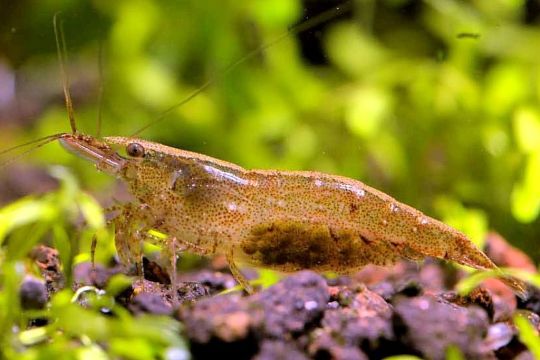
Cherry Shrimp ~ Neocaridina davidi Freshwater shrimp were introduced to help control the growth of bacterial and algal mats in riverine environments, keeping waterways clear. They also serve as a secondary food source for carp. This species was chosen due to its ease of culture.

Ramshorn Snail ~ Planorbarius corneus Like the cherry shrimp, freshwater snails were chosen to help keep down algal growth and keep waterways and rice paddies healthy and productive. They, like the shrimp, also serve as a secondary food source for carp.
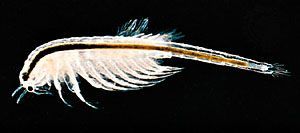
Brine Shrimp ~ Artemia franciscana Brine shrimp hold little value to humans, except as a food source for mullet, carp, and other marine species. They were mainly included because, as eggs, they can survive being frozen for long periods of time and so did not require the heavy cryogenic stasis equipment needed for most other animals. During early colonization they were used as a feed for the recently-thawed fish fry, and continued to be eaten by subsequent generations of larval fish.
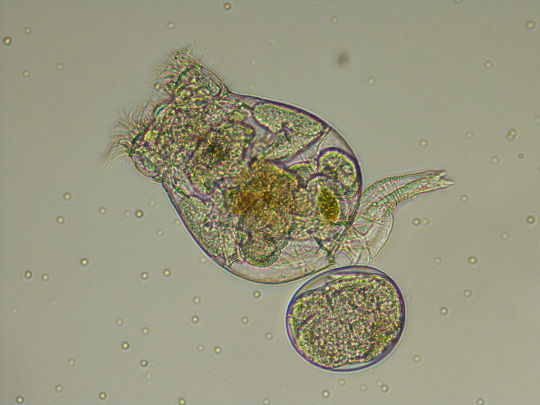
Rotifer ~ Brachionus plicatilis Like the brine shrimp, the rotifers were included as larval fish food and because they could be transported easily and in large numbers with nothing more than a simple freezer. They were one of the first animals introduced to Ahuizotl, along with tardigrades, and were intended to form the base of a self-sufficient aquatic ecology.
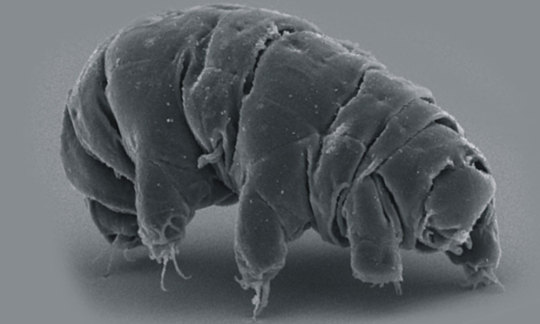
Tardigrade ~ Milnesium tardigradum Tardigrades were chosen as pioneer animals to help create usable soils. They also provide food for larger invertebrates such as snails, isopods, and springtails. Thanks to their ability to withstand low temperatures for long periods of time in a cryptobiotic state, they could be brought in large numbers in a simple freezer.
~o~O~o~
These eighteen species of animals - and hundreds of species of plants - were cultivated to form a self-sufficient ecosystem in the dusty, dry wastes of Spero. Croplands, orchards, and timber plantations were planted along the banks of the rivers; farther from water, scrubby grasses and hardy forage plants grew in the infrequent rainfall. While the vast majority of the planet was still hostile desert, endless sand dunes or bare rock swept clean by the wind, humanity managed to eke out an existence along the narrow inhabitable margins of the rivers.
Until a cataclysmic event destroyed humanity's hope of creating a new home... and simultaneously laid the groundwork for Spero to become a thriving paradise far beyond their wildest dreams.
#speculative biology#spec bio#speculative evolution#spec evo#map#seed world#Vicis Aeternum#Spero#fantasy map#personal project
48 notes
·
View notes
Text
Into Eternity
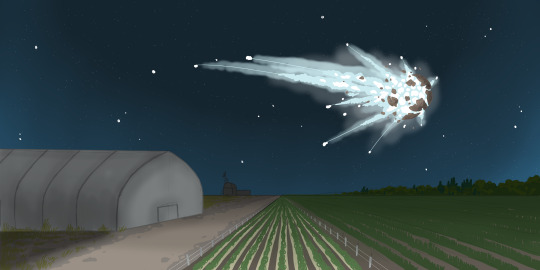
This is a short story I wrote for my Speculative Evolution project Vicis Aeternum. It details the major event which ended humanity's presence on the desert world and began raising sea levels, ending the pre-colonial era and kicking off the Diluvian period. Story under the cut.
~o~O~o~
“Hey, Stella, you want some coffee?”
Stella Cartier turned away from her computer. Reg Hadley stood in the doorway, holding a cup of steaming liquid and eyeing her with studious passivity. “I thought we were all out.”
“We were.” Reg’s voice was as bland as his face.
“What happened? Did someone find an unopened canister?”
“Not quite.” A strange expression rippled over Reg’s face, quickly suppressed. Stella eyed him suspiciously. “You want some coffee or not?”
“It’s been way too long since I’ve had a good cup of coffee. Give it here.” She started to reach her hand out, then paused.
“This had better not be a trick, Reg. If that cup has something gross in it, I will personally set fire to your underwear drawer.”
“No trick.” Reg handed her the cup, and there was no mistaking the achingly familiar aroma. His face seemed to have trouble keeping its neutral expression. “It’s real. Taste for yourself.”
Stella did, and her eyes lit up. It was real coffee, not too bitter, with all the nutty tones of a good Colombian roast. It was probably just the long deprivation talking, but it seemed to her to be the most heavenly thing she’d ever tasted, far and away better than the freeze-dried coffee they’d lived off of since they’d arrived on Spero. It definitely had cream in it, a bit of sugar, and a faint taste of vanilla. Wherever Reg had gotten this coffee, it was a high-quality blend. She sipped slowly, savouring the long-desired beverage. “This is amazing. Where’d it come from?”
“Well, that’s what I’m here to tell you.” Reg’s studied look of indifference crumbled, replaced with shining eyes and a ludicrous grin. “The plantation’s had its first surplus harvest. What you’re drinking is directly from our fields.”
Stella’s eyes had been closed, the better to taste the coffee with. Now they snapped open. “What!?”
“You heard me. Everything in that cup was grown right here on Spero. The coffee, the sugar beets, the vanilla. We had our first hazelnut harvest, too, but I know you hate it so I didn’t put any in yours.”
Stella broke into a grin even wider than her co-workers’. She set the coffee aside and trapped him in a bone-crushing hug. “That’s incredible! We’re finally becoming self-sufficient!”
“Ow, ow, ow! The ribs, the ribs!” Reg spluttered. Stella let go.
The colony world of Spero was a long shot. A desert planet with only a small amount of liquid water on its surface, it was nonetheless the only habitable world within reach of humanity’s interstellar program. Nearly five years ago, Stella, Reg, and the two hundred other scientists had landed on the planet after a hundred years in cryogenic stasis and set to work terraforming the planet so it would sustain human life. Now, all their hard work was paying off.
“I didn’t just come to bring you coffee,” Reg said when he had gotten his breath back. “There’s a party in the Agri storehouse. Kaeli baked some cakes – Pineapple flavoured, also from Spero-grown food. Everyone’s invited.”
“I’ll be there in a minute. I just have to finish up this soil analysis.” Reg left the room, and Stella returned to her computer, sipping her coffee gratefully. She couldn’t keep the smile off her face.
Five years of work – and the planet was finally turning from merely a habitable planet into a nice one.
Granted, there were still the hurricane-force windstorms that threatened the very foundations of her analysis hut almost every day, but the strategically planted lines of fruit and hardwood trees had taken most of the bite out of those winds. She still went to bed every evening with a fine layer of desert dust clogging her nostrils. The arid air still hurt her throat when she woke up in the mornings. But things had gotten better. Most of the land around the Mare Vagus and the banks of the one large river was fertile cropland now, with rich humus instead of sand and dust, and filled with growing green things; farther away from the water, the harsher land still grew grasses and other browse for livestock. And with the success of the coffee, vanilla, and pineapple plantations, even some of the pickier plants were beginning to thrive.
All through the hard work of Stella and the other first-wave colonists.
It was an achievement to be proud of – to take a desolate world, with nothing of value except a breathable atmosphere, livable temperatures, and surface water – and turn it into a home. Stella smiled with satisfaction as she completed her work and went to join the others.
~o~O~o~
The party was a party. People were laughing and singing and playing games. Kaeli Ngi, one of the farmers and sometime baker, stood by her pineapple upside-down cakes, glowing with pride and excitement. The lead arborist, Stan Winters, stood beside her, equally proud of the Spero-grown maple-wood table that the cake sat on, and chatting with anyone who’d listen about the struggles he’d had getting the maple trees to grow in the dry soil. There were games. There was food. There was even a flask of moonshine, made from Spero-grown potatoes, making its way surreptitiously around the crowd as people poured small amounts into their coffee, but no one reprimanded the owners for it. People were in high spirits.
Stella got a slice of cake and wandered over to a group of people that included Reg and several other soil analysts. John Tigard noticed her coming and moved to the left to make room for her.
“…don’t know what it is,” Mika Watanabe was saying. “Some kinda box-type thing.” She paused when she noticed Stella. “Hey, Stella. How’s it going?”
“Everything’s delicious,” Stella mumbled around a mouthful of cake. She swallowed. “What’s happening with you?”
“Mika’s been telling us about this weird thing Leo found buried up in the new cropland they’ve been prepping,” John said, his voice slurred a little from the moonshine in his coffee. “Apparently it’s some kinda artifact.”
Mika nodded emphatically. “It’s a great big box-shaped thing,” she said. “Looks like a coffin, except its way too big. Made of some kind of black metal. We have no idea what it is, but it’s definitely not natural.”
“Maybe it’s alien,” Reg said, his voice quavering in affected spookiness, wiggling his fingers in Mika’s face while he made ghost noises.
Mika glanced at him worriedly. “It’s possible.”
“Let’s not jump to conclusions,” Stella said carefully. “It might be a piece of debris from one of the original probes. Didn’t one of them explode?”
Mika didn’t look convinced. “That could be. But I think you guys’ll have to see it for yourselves. It’s… weird.”
“Weird how?”
“I don’t know.” Mika swirled her coffee. “There’s just this… feeling you get when you look at it. Leo says it makes him dizzy.”
“Have you checked it for radiation?” Stella asked pointedly. “Toxin emissions? Sometimes materials react weirdly to being in space.”
“Yes to both,” another soil analyst – Ravitya Prasad – interjected. “Before we even got it out of the ground. Nada.”
“Hm.” Stella took another bite of her cake. “Where are you keeping it? I’m curious,” she said when her mouth was empty again.
“We got it stashed in a supply quonset,” Mika supplied. “Out by the strawberry fields. Leo thinks its creepy – doesn’t want it anywhere near the barracks. I can show you later, after the party.”
“Sounds like a plan,” Stella smiled, and took another bite of her cake. “Mmm. This is really good.”
~o~O~o~
“Yeah, that’s definitely not debris from a probe.”
The unidentified object was about fifteen feet long, lozenge-shaped with squared-off ends and smoothed edges. Its surface was smooth and shiny black – there was not a hint of damage from re-entry or impact, not even any sand-scoring from exposure to Spero’s harsh desert. There were also no other features – no seams, no details, nothing. It was a featureless monolith.
Mika, Stella, and Reg stood in the supply quonset, inspecting the mysterious discovery in the dwindling evening light. Through the open doors, fields of spinach, strawberries, and onions stretched to the impossibly flat horizon. The dull gray-brown orb of the moon hung low in the eastern sky, so like and yet so unlike Earth’s own moon. A pair of camels knelt sedately on the hard-packed dirt, munching on the feral grasses which sprouted everywhere like weeds.
“Yeah, I didn’t really think it was,” Mika seemed to sag. “Any other ideas?”
“I’m thinking aliens are looking more and more likely,” Reg ventured. Stella shot him a disgusted look.
“Grow up, Reg. There weren’t even any microbes in the water before we began terraforming. Humanity’s been looking for alien life for centuries, and we haven’t found so much as a bacterium on any of the planets we’ve surveyed. Why would there be an intact alien artifact just sitting there on a world that’s been dead for billions of years?”
Reg just rolled his eyes. “Well, if it’s not aliens, than what do you think it is, oh wise exalted one?”
“I have no idea,” Stella said honestly. “But if we can figure out its mass and volume, we might be able to figure out what its made of. I guess it might be some kind of mineral deposit that got buried in an ancient flood – obsidian, maybe.”
“Right,” Mika snorted. “A natural mineral deposit this big, flawlessly smooth, and perfectly symmetrical? Give me a break.”
“Yeah,” Reg agreed. “And besides, don’t you feel it?”
“Feel what?” Stella asked, confused.
Reg looked at her as if her head was made of broccoli. “You don’t feel it.”
“Feel. What.” Stella repeated, growing irritated.
“The artifact,” Reg’s voice was low, almost a whisper. “It’s… humming.”
Stella frowned. “Humming.”
Reg and Mika both nodded. “It’s… not an audible sound,” Mika supplied. “It’s more like… it’s almost like its vibrating in my soul. I can’t really describe it.”
“I don’t feel anything,” Stella said flatly, crossing her arms. “And I’m beginning to think you two are having a laugh.”
“Stella, I know I have a history, but I swear to you I am not messing with you right now,” Reg raised one hand and placed the other over his heart in the classic position of one giving an oath. “I don’t know why you don’t feel it, but trust me, if you could, you’d know exactly what I’m talking about.”
Stella looked stubbornly at him. She opened her mouth to retort, but suddenly her radio beeped. Flashing a cool look at her friends, she thumbed the transmission button. “Cartier here.”
“Stella, are you outside? You need to go outside right now.” The staticky voice was Ravitya’s. It sounded urgent. Frowning, Stella shared a confused look with Mika and Reg and strode towards the doorway.
Nothing appeared to have changed. The camels were still tied up, munching grass as they knelt by the hut entrance. The landscape was still the same as always – impossibly flat, covered in agricultural fields, with only the silhouettes of distant buildings and a line of faraway trees breaking up the eternal nothingness that characterized the planet. Stella frowned. It all looked exactly as it should. Maybe strangely bright for this time of night…
“Okay, we’re outside,” Stella began. “What’s so urgent-”
“Stella, the moon,” Mika gasped. “Dear God, Stella, look at the moon.”
Stella turned. And felt all the blood drain from her face.
The moon had exploded.
The normally dingy grey planetoid had cracked open like an egg, spewing a titanic cloud of glittering white across the starscape. The icy center of the moon glowed almost eye-hurtingly as it reflected the sunlight, exposed to the vacuum of space for the first time in- nobody knew how long. Chunks of debris flew away from the disintegrating body, cutting through the expanding plume of ice shards like bullets. It was like a still from an action film – an explosion, frozen in time, rendered in the impossible bluish-white of pure water ice.
“What… what…” Stella’s mouth worked, but she couldn’t form a sentence. “What happened?” she finally ground out.
Neither Mika nor Reg had an answer.
The apparent peacefulness of the cataclysm was just an artifact of the explosion’s great scale and distance. In actuality the colossal chunks of ice and crust were hurtling through space at speeds of hundreds, maybe thousands of kilometers per hour.
Right towards the fertile fields of Spero.
Stella felt her heart skip a beat.
~o~O~o~
“Quiet, everyone, quiet,” David Nwadike, Mission Coordinator, held up his hands to stem the tide of shouted questions and panicked comments from the assembly of scientists.
An hour after the moon’s destruction had become apparent, almost the entire settlement team was gathered in the administration building’s auditorium – the only ones missing were a few who had been stationed in distant outposts, and those whose experiments were at a critical stage and could not be left unattended. Of the two hundred people on Spero, a hundred and sixty were crammed into the large room, and the rest were likely listening in on the radio broadcast. Everyone had seen the moon explode, and everyone was frantically questioning what it would mean for the future of the Spero colony. Kendrick stared out over the crowd, gut twisting. It wasn’t any good thing.
“There is no need to panic,” he said when the cacophony had at last died down. “Please, we are scientists. Let us remain rational.”
Nwadike was an accomplished public speaker, and so his words sounded strong and confident – a confidence he didn’t actually feel. Nonetheless, they had the desired effect. The tension in the room lessened slightly.
“It’s still too early to tell precisely what happened,” Nwadike continued. “We think that a long-period comet or planetoid collided with the moon, breaking it into pieces. Why this object never appeared on our scopes is a question I don’t have the answer to. Lubovich and the astronomical team are currently hard at work analyzing footage from the impact to try and come up with answers.
“In the meantime, we have more pressing concerns. Unfortunately, our little corner of Spero is directly in the path of the debris cloud. Pieces of material from the moon are heading toward Spero at approximately 40,000 kilometers per hour. We have about eleven hours before the first meteorites hit. If we’re lucky, we’ll just get a light dusting. Regardless, we must spend that time preparing.
“Agriculture division, I want you to lock down the seed banks. See if you can get them into the emergency bunkers. Animal husbandry, let all of the livestock free – better they’re dispersed and we lose half the animals than the barns get hit and we lose them all in one fell swoop. Technology division, we need every vehicle fully fueled and ready to go. Astronomy is trying to predict where the meteorite impacts will be least severe – chances are good we’ll be making an emergency evacuation to higher latitudes.” Nwadike looked out over the sea of ashen-gray faces. “Everyone else, standing evacuation orders apply. Shut down all experiments and get yourselves, your families, and your most vital equipment – in that order – ready to move out at a moment’s notice. That will be all. Good luck, team.”
The auditorium once again devolved into chaos as scientists rushed about to follow their duties. Frantically shouted questions were lost in the frightened hubbub. Nwadike felt deflated.
Five years of work. Three hundred years of preparation. Two hundred people, good men and women, scientists who’d devoted their lives to see this venture succeed. All of it at risk, possibly doomed, because of the mathematical quirks of orbit trajectories. A fraction of a degree to the right or left, and the planetoid would have missed the moon entirely, and none of them would have been any the wiser.
But the trajectories had intersected in the worst possible way, and now colossal chunks of ice and debris were hurtling toward them at horrifying speeds. Nwadike wondered if he – if any of them – were going to survive.
~o~O~o~
Ten hours later, the first meteorites began to hit.
Stella looked up at the debris cloud, looming ominously over the horizon. In the light of evening the night before, the shattered moon had seemed impossibly bright – the moon’s icy interior, normally covered by murky carbon dust and other organics, was suddenly, blindingly white when exposed to the light of the sun for the first time. Now, however, the planet and the debris cloud had shifted, and the sun was coming up from behind the cloud – which appeared much, much larger, covering most of the southern and eastern skies and blocking out the light. The cloud was dark and gray, a thunderhead of darkness so high up in the atmosphere it wasn’t even beginning to billow yet. Flashes of light were appearing high in the sky as chunks of ice and dust burnt up in the atmosphere. It was almost pretty – a sparkling starscape in the dim morning light. If only it wasn’t the herald of something terrible.
With a surprisingly anticlimactic ding, a chunk of ice the size of a softball impacted the hood of Stella’s evacuation truck and bounced away.
Everyone riding in the vehicle – Stella, Kaeli, John, nine others from Agriculture and Animal Husbandry – collectively winced at the sound. The vehicle rocked and sputtered, but kept driving, the meteorite having merely dented the hood. Stella said a silent prayer of thanks that it had only been a small one.
As if on cue, there was an impossibly loud noise, like a bomb going off, and the truck lurched violently. The evacuees were tossed bodily through the air as the force of the impact knocked the vehicle onto its side. Stella was wearing a seatbelt, but there were more people in the truck than it had been designed to carry – not everyone was so lucky.
When the ringing in her head stopped drowning out all other sensation, Stella took stock of her surroundings. She was hanging suspended from her seatbelt, arms and legs dangling from the side of the truck. Beside her, Kaeli hung limply – a trickle of blood ran down her chin from her ear. Burst eardrum. Below them, on what used to be the opposing side, the rest of the passengers lay unmoving.
Chest aching from where it had been thrown against the seatbelt, Stella began disentangling herself. Careful not to step on any injured people, she lowered herself to what was now the floor and began trying to get Kaeli down. The smaller woman was unconscious, which made things both easier and harder.
John appeared beside her, already free from his restraints. He mouthed something.
“What?” Stella asked. She couldn’t hear him – his voice was distant and oddly distorted.
“…got to get out of here,” she finally made out. John was holding one bloody hand to the side of his head – his ears must be ruptured, too. By the pain and the distorted noise, Stella guessed that the blast had been loud enough to burst all of their ears.
“Help me get Kaeli,” she called, as loudly and clearly as she could. John nodded and stepped up to lower the young farmer slowly to the floor. She groaned and began to stir.
Stella checked her over for further injuries, ignoring the hail of tiny meteorites which fell outside the truck. Kaeli didn’t seem to be critically injured, so Stella turned to help John check the rest of the evacuees.
“We got three dead,” John shouted grimly. “Martin, Alvarez, and Wentland. Sigurdsson’s critically injured – broken femur, bleeding badly. Nothing we can do for him. The rest are unconscious, but they’ll live if we get out of here.”
“What do we do?”
“We get them to safety,” John grunted, hefting an unconscious body over his shoulder. “I’ve got Randall, You get Kaeli. There’s a storage hut about a hundred meters back – take her and run. Don’t get hit.”
Stella nodded and struggled to lift the smaller woman over her own shoulder. John kicked open the truck’s rear doors and the two survivors stepped out into another world.
Chunks of ice rained from the sky like hailstones. The sky was almost pitch black – the debris cloud completely blocked out the sun. It was not entirely dark, though – the sky was alight with countless shooting stars, meteors the size of pebbles or softballs burning up in the atmosphere. Stella felt a tiny meteorite bounce painfully off her shoulder, one small enough that the atmosphere had slowed its descent. Gritting her teeth, she adjusted her grip on the unconscious Kaeli and took off, loping over the flat prairie toward the closest quonset.
Every muscle in her body ached. Her ears screamed in pain. Kaeli gasped slightly as a small meteorite slammed into her hip, and Stella winced in sympathy. In the distance, there was another explosion – a much larger chunk of ice impacting with the ground, one too large to be slowed by the atmosphere. Stella flinched as something cool fell onto her face – but the impact didn’t hurt. With a start, Stella realized it was raining.
What the heck?! It never rains here!
In her five years on Spero, Stella had witnessed rain maybe twice, each time a halfhearted sprinkle that lasted a grand total of ten minutes before dissipating. Supposedly it rained more in the faraway mountains, and the presence of the river supported that fact, but Stella had been too busy with the business of colonizing a desert world to make the long trek to the highlands. Here in the lowlands, the only water was the river – and what the desalination plants could get from the mare.
But now droplets of water fell all around her, quickly filtering down into the desert soil. In the distance, lightning flashed – a static discharge caused by the addition of tons upon tons of water vapour to the atmosphere by the icy, rapidly vaporizing meteorites. Stella raced over the ground, which was rapidly turning to mud. In a matter of minutes she was soaked through. A chunk of ice the size of a grapefruit thudded to the ground maybe two feet from her. Seconds later, another explosion a short distance away nearly knocked her over, but she steadied herself and kept running.
Even through her damaged eardrums, everything was loud – the crackle of thunder, the dull boom of explosions, the patter of rain and meteorites on grass and crops and soil and the roof of the quonset hut. Stella tore open the doors and raced inside, followed by John.
It was the same quonset she’d been in when the moon had first exploded – the mysterious black artifact sat against one wall, covered in a fine layer of dust like everything else on this planet. Stella barely noticed it – she had other things to worry about. The building’s roof was peppered with holes, but it would still protect them to a degree. Sighing with pain and relief, Stella deposited Kaeli on a stack of pallets and sat down miserably beside her, soaking wet and aching all over. John, however, didn’t sit down. Instead, he placed Randall carefully on his own pallet and went to rummage in a container that sat just inside the door.
“I’m going back out there,” he said grimly, lifting the emergency first-aid kit which was kept in every outbuilding.
Stella looked up at him in a panic. “Are you insane?”
“There’s still five living people in that truck,” John reasoned, moving to pull a couple of hard hats off the storage rack. “They need medical attention, and fast. I’ll be fine. You tend to Kaeli and Randall.”
“Wait!” Stella cried, reaching out to stop him. John paused and looked back even as he stepped out through the door.
“Please, just – just stay alive,” she said. Her voice, distorted as it was, sounded small and frightened. “I can’t – I need you to stay alive.”
John nodded. “I will, Stell. I promise.”
And he was gone.
~o~O~o~
John never came back.
Stella sat there in the Quonset, shivering, for what must have been hours. Kaeli and Randall were still unconscious, which was a bad sign. Randall was breathing in short, gasping breaths – his ribs had been broken in the crash.
Stella wished John hadn’t taken the first-aid kit with him.
The sounds of explosions and the incessant patter of meteorites bouncing off the roof had increased in volume and frequency. Flashes of light – lightning, meteors or distant impact explosions – flickered constantly through the holes in the roof, which were growing more and more numerous. Meteorites flew through the ragged metal, bouncing off of equipment and shelves with a sound like gunshots, making Stella jump every time.
The structural integrity of the roof – their only protection – was becoming less and less sound, and the frequency and violence of meteorite impacts was only getting worse. It was only a matter of time before… before they…
Stella couldn’t help it. It was too much. She put her head in her hands and cried.
Child of the stars.
With a strangled gasp, Stella jerked her head up and looked around the room.
Had she heard a voice? Had John returned?
But no, Kaeli and Randall were still unconscious, and John was nowhere to be seen. She was alone in the old storage hut, with nothing but farming equipment and that strange black artifact.
Wait.
What was…
Stella felt it deep in her bones – a deep, harmonic thrumming. It seemed to be emanating from the smooth black box.
Child of the stars.
This time there was no mistaking it. That had definitely been a voice – one strange and ancient, and undistorted by ruptured eardrums. It was almost as if…
As if the box itself was calling to her.
The thrumming became more intense as the thought crossed her mind, almost drowning out the rattle of hail on the roof of the quonset. Hesitantly, Stella stood up and slowly approached the artifact.
The smooth black surface was a featureless void in the darkness cast by the debris cloud, but it still seemed to glow with some indefinable light. Stella tentatively reached out a hand and brushed her fingers across the glassy surface.
Child of the stars, this world is lost.
The words fled through her mind like lightning. Stella flinched. They weren’t in English, but somehow Stella still understood them perfectly.
“Who – who are you?” she asked.
I am the Soul Ark.
“Wha- what?” Stella was bewildered. “What’s a soul ark?”
It is a time capsule, the voice continued. Long ago, this world was the home of my people. We thrived, and lived, and devoted ourselves to the study of life and the universe. We learned how to shape the world according to our will. We built cities, and monuments, and cunning devices that gave us unimaginable power. We learned how to manipulate our very souls, and in doing so achieved what we believed was tantamount to godhood. In our hubris, we believed ourselves gods – but at the height of our glory and arrogance, the true gods reminded us of our own mortality. A stone was cast from the heavens.
“A stone?” Stella asked. Half of her was fully absorbed in the story, the other half freaking out over the fact that she was conversing with an actual alien. Or maybe an AI created by ancient aliens. She wasn’t quite sure.
A great meteorite, the Ark explained. Across the room, a particularly large chunk of ice punched yet another hole in the Swiss-cheese roof, and Stella flinched. As great in size as the largest of our cities. It fell from the heavens with fire and ash, and the thunder of its impact destroyed us all. All was lava, and ash, and smoke, and burning. In desperation, those of us which remained built this capsule to hold our souls until such a time as the gods saw fit to restore life to this world.
“So you… so the Soul Ark holds the, um, souls of millions of ancient aliens?”
Millions? No. the Ark sounded infinitely sad. There were a mere thirty of us which still remained among the living when the Ark was completed. I was its architect – I bound my own soul to it to give it its power. My name was Qethryt. Now, I am no more. For a billion years I have slept, buried by ash and sand, holding safe the souls of my people, until I was awakened by the arrival of you humans.
Child of the stars, I have listened to your people’s souls – I have heard your struggle, seen your victories, watched as you fought to wrest a living from this forsaken place. Though this was once our home, it is ours no longer. The gods cursed my people – may they be kinder with yours.
“Yeah, well, it’s a little late for that,” Stella said, angrily wiping away a tear. “The moon exploded.”
Curious. There was no moon in my time.
Stella rambled on, choking back sobs. “Everyone else is probably dead and- and I’m probably going to die here, and- and-” it was too much. She burst into tears.
Child of the stars, accept my gift.
“What?” Stella looked up, startled. Tears tracked down her face, mingling with the rain which drizzled through the perforated roof.
I was built to carry souls safely through the aeons. But all things must fail eventually – it is the law of the universe, set forth by the gods. All things eventually fade, no matter how well preserved. For a billion years I have persisted, watching as one by one my people’s souls withered away despite my efforts. I am all that remains. And I have nothing left to me except my purpose.
Child of the stars, once again this world is destroyed, and there is no hope left for humanity. Once I would have looked down on you as a lesser being, but the gods’ lesson was well learned. If you will accept it, I give you this gift: to take your souls, and the souls of your people, and keep them safe until such a time as the world is once again fit for life.
Stella felt tears running down her face. “R-really? You’d- but how-” She held her head to her hands. “Uugghhh, my head.”
A small meteorite pinged off the glassy black Ark. Stella looked down. Ripples of water flowed over her feet – the beginnings of a flash flood, rushing under the doors. Another meteorite burst through the roof a few meters away.
Time is running out, child of the stars. Will you accept this gift?
Stella thought. An alien device, a relic of an impossibly ancient civilization, with the ability to hold “souls” inside it. A world under siege, a dark cloud blocking the sunlight as rocks rained from the sky like shells in an ancient battlefield. Stella knew that the debris cloud would soon envelop the planet, encircling the equator and shading out their crops, their orchards, their pastures. Only the northern settlements had any hope of surviving the apocalypse, and those wouldn’t be able to support two hundred colonists – assuming that many escaped the meteorites.
She thought of Kaeli, lying unconscious on their pallets a few meters away. Probably dying. She thought of Reg and Mika and Teddy, lost somewhere in the apocalypse, their own truck probably drilled through by a meteorite or swamped in the mud. She thought of David, the stalwart man who had volunteered to venture out into a meteor storm on the slim chance he could rescue the men and women whose bodies were broken when their truck had capsized.
There was no stopping this storm. No surviving the onslaught of moon fragments falling from the sky except by sheer luck. The floods would wash the settlement away, five years of hard work erased overnight. Already she felt the foundations of the quonset groaning against the pressure of the flood. The water was partway up her calves now. Soon the building would collapse, and she would die.
There was only one chance of survival. An unknown alien mind, unimaginably old, offering something she – in her exhausted, terrified state – could barely comprehend.
“Yes. Yes, I accept,” she blurted. “Please, if you can help us, do whatever you can.”
Then sleep in peace, child of the stars, you and all your kin; and I will carry you into eternity.
For a split second, everything went white. When the light faded, the Soul Ark was alone. The quonset was empty. Mere minutes later, the force of the floodwaters carried away the crumbling structure.
Humanity was gone, taken by the Ark. The planet was empty save for the livestock which fled from the oncoming storm and the crops which weathered it the best they could. Still the apocalypse advanced, an endless rain of ice and fire and water, tearing into the desert like some divine monstrosity – an eldritch demon, unfathomably vast, sowing chaos in its wake.
But if there had been any sentient minds around to comprehend it, the violence and destruction wrought by the storm brought something else, too. Carried on the ice and water vapour and rain was the hope of new beginnings.
Spero was not named “hope” for nothing.
-------------------------------------------------------------------
To recap, an icy trans-neptunian object (or at least, the equivalent of such in a solar system with no Neptune) roughly half the size of Pluto with a highly erratic orbit collided with Spero's single moon, shattering it in a catastrophic event. The debris cloud, made mostly of water ice with some rocky and organic material, fell towards Spero and deposited huge quantities of water in the form of ice and vapour into the atmosphere. This had the immediate effect of causing torrential rain and meteor storms all across the lower latitudes of the planet, which in turn caused flash flooding and the input of massive volumes of water into the ocean. The cloud of debris encircled the planet, filtering out most of the sunlight and plunging the equatorial regions into a dim, sunless twilight that lasted for thousands of years before the debris cloud finally collapsed into a planetary disk not unlike Saturn's.
This caused the first of several mass extinction events. Among the casualties were many of the more sensitive plants which required bright sunlight and dry conditions to grow, although many of these still survived in high latitudes where sunlight still reached. Animal populations plummeted across the board, although the only species which actually went extinct were the humans (which disappeared mysteriously) and the sheep, which could not survive without regular shearing by humans. All other species managed to survive, although most had severely reduced populations; after all, the colonist species were specifically chosen for their hardiness and genetically altered to maximize their chances of survival in an ever-changing world.
#creative writing#fiction#short story#speculative evolution#spec evo#worldbuilding#Vicis Aeternum#Spero
25 notes
·
View notes
Text
*sigh* I really want to show you guys all the funkydoodle things I've been thinking up for my spec evo project, but that means I actually have to draw them* instead of just daydreaming about them
*horrendous *painful *literal torture
7 notes
·
View notes
Text
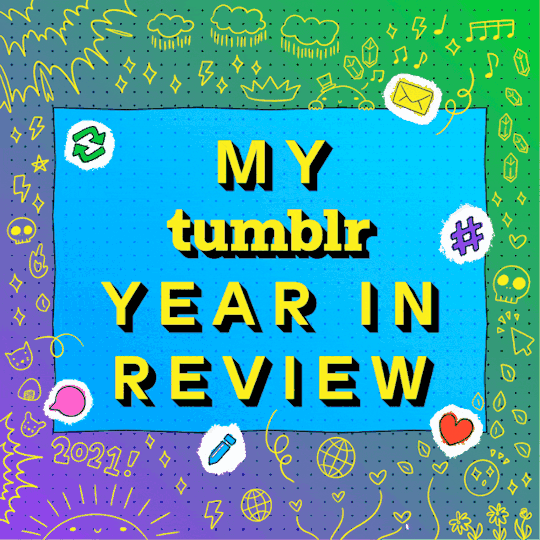
I posted 1,001 times in 2021
364 posts created (36%)
637 posts reblogged (64%)
For every post I created, I reblogged 1.8 posts.
I added 1,772 tags in 2021
#dark academia - 233 posts
#quotes - 223 posts
#words - 189 posts
#spilled words - 183 posts
#quote - 176 posts
#spilled thoughts - 175 posts
#text - 166 posts
#words words words - 164 posts
#book quotes - 134 posts
#dark aesthetic - 129 posts
Longest Tag: 64 characters
#i know it's not a big deal but this shit traumatized me for life
My Top Posts in 2021
#5
Beautiful Latin phrases ~ part 2
• veni, vidi, vici - I came, I saw, I conquered.
• vivamus, moriendum est - let us live, for we must die.
• ergo dum me diligis - so long as you love me.
• alis volat propriis - she flies with her own wings.
• sic mundus creatus est - thus the world was created.
• aut inveniam viam aut faciam - I shall either find a way or make one.
• mors certa, hora incerta - death is certain, its hour is uncertain
• mors mihi lucrum - death to me is reward
• aeternum vale - farewell forever
• mors ultima linea rerum est - death is everything’s final limit
• nascentes morimur - from when we are born, we begin to die
• mors vincit omnia - death conquers all
• omnia mors aequat - everything is equal in death
• tempus edax rerum - time, devourer of everything
3559 notes • Posted 2021-03-06 01:24:59 GMT
#4

Ocean Vuong- On Earth We're Briefly Gorgeous
4277 notes • Posted 2021-04-02 09:10:14 GMT
#3
“Before I am your daughter, your sister, your aunt, niece, or cousin, I am my own person, and I will not set fire to myself to keep you warm.” ― Elizabeth Gracely
6514 notes • Posted 2021-06-03 18:46:32 GMT
#2
"A university degree, four books & hundreds of articles and I stil make mistakes when reading. You wrote me "Good morning" & I read it as "I love you".
-Mahmoud Darwish
6776 notes • Posted 2021-05-28 16:22:11 GMT
#1

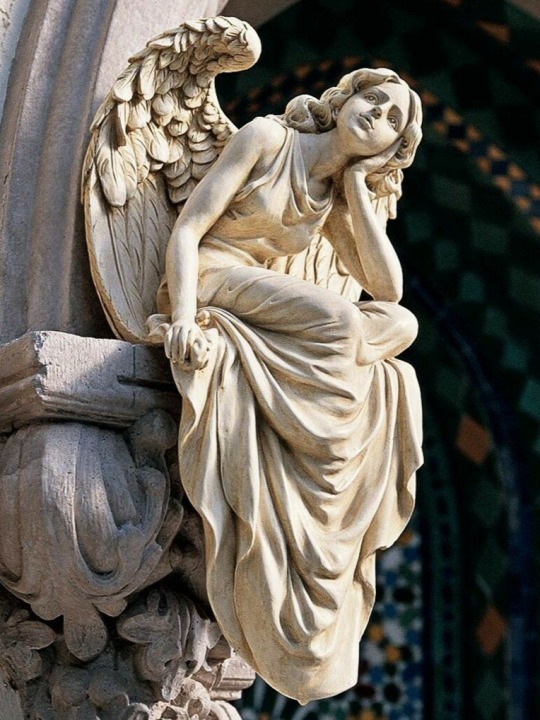
-Benedict Smith, I wish I wrote the way I thought
11455 notes • Posted 2021-07-31 05:15:36 GMT
Get your Tumblr 2021 Year in Review →
#my 2021 tumblr year in review#your tumblr year in review#2022#2021#this year#new year#text#posts#aesthetic#mine#tumblr aesthetic#tumblr wrapped#quotes#quotes of the day#greek mythology#greek poetry#greek tumblr#greek literature#lit
84 notes
·
View notes
Text
I have many, many creatures and concepts which I would love to show you guys, but most of them exist only in my mind or as a few bullet points in a poorly-formatted word document. The Burnout™ kicked my backside particularly bad this past year; it's been really hard to maintain my interest in things when life has felt exhausting and pointless. Drawing, especially, takes a lot of spoons that I just haven't had to give. The church notebook doodles are part of an ongoing attempt to rekindle the joy I used to find in art - small, quick, easy, and low-stakes. I don't need to make them look good, I just need to make them.
And it's working! I've been sketching and drawing more, and enjoying it! I'm not all the way better yet but I've come a long way. So I actually do have some stuff I can show you!

Meet the Arboars! This is a clade of arboreal pigs which appeared pretty early on in the Diluvian, from an ancestor which began climbing trees to reach the tasty, tempting, as-of-yet-mostly-unexploited resource of fruits and leaves. Arboars are united as a clade by their binocular vision, vestigial or absent nasal disc, and grasping, hand-like hooves with opposable thumbs on both fore- and hindlimbs. Many species also have short, straight, daggerlike tusks which resemble those of peccaries more than their suid ancestors, although some species are tuskless. All Arboars are completely tailless (Just ignore the Hunting Hog in the top left. He's not part of the family - he just showed up and refused to leave. Also he needs a redesign).
Beginning on the far left, below the Hunting Hog, is the Brown Barbaloot [Micrarctos (Micrarctos) seussi], an archetypal primitive Arboar. Resembling a small bear in their body shape, they are endemic to temperate Truffula-palm savannah ecosystems, and are the primary disperser of the Truffula's seeds, as they will happily gorge themselves on the purple, plum-like fruits. Like most pigs, they will eat just about anything, but they show a strong preference for herbivory; the filamentous leaflets and sugar-rich fruit of the Truffula palm form about 70% of their diet, making them specialists. Brown Barbaloots are highly social, living in mixed-family groups of 10-30 individuals. Males are slightly larger than females, and both sexes have short, sharp tusks hidden by their lips which they use for defense.
Just below the Brown Barbaloot is its close cousin, the Black Barbaloot [Micrarctos (Dasyanthrulus) nigricans]. Unlike the Brown Barbaloot, Tropical Barbaloots in the subgenus Dasyanthrulus have short, sparse fur to better keep cool in the hot, humid equatorial rainforests. Black Barbaloots are slightly less herbivorous than their relatives and will actively seek out bird's nests and eggs. They also eat leaves, fruit, fungi, isopods, and arboreal earthworms (Arborworms). Tropical Barbaloots have a unique behavioural adaptation against predators - they will chew on toxic Arborworms to elicit the secretion of toxic compounds, which they mix with their saliva and smear on their fur as an antipredator defense. Although Black Barbaloots are fairly subdued in their colouration, some of their relatives (such as the Gilded Barbaloot, M. chrysocheirus) have bold, aposematic black-and-yellow colouring.
Up and to the right of the Brown Barbaloot is the Barbabrute [Brutus set], a descendant of the Rock Barbaloot (Micrarctos montanus). These big, aggressive barbaloots are secondarily terrestrial, and highly successful; baboon-like troops of these pigs can be found in savannah and woodland ecosystems all across Spero, where they are opportunistic omnivores that will eat anything edible. Their belligerent demeanor and strong social tendencies make them an unpleasant target for most predators, though they are easy prey if they can be separated from their group; the tusks are used mostly for combat between males and enforcing the strict social hierarchy.
Below the Barbabrute is a very peculiar descendant of the tropical barbaloots, the Common Kobold [Callicantzarus repens]. This nocturnal animal is a dedicated carnivore, feeding on invertebrates, roosting birds, and other mammals including the young of other barbaloot species. Their large, slit-pupiled eyes are ideal for seeing in near-complete darkness, and their nail-like hooves have become large, curved claws for catching prey. Though they are still very social, they do not hunt in a pack; each Kobold hunts alone, bringing their catch back to the colony's nest to feed the young, injured, or elderly. They are incredibly skilled climbers with very flexible hips and shoulder joints that allow them to move through the trees with alarming speed and dexterity. Kobolds will eventually diversify into a very successful, long-lived clade which persist throughout the Diluvian and into the Thalassic.
Down and to the right of the Kobold is the Babi Hutan [Dasychoerus giganteus], the largest arboreal animal every to live on Spero. About the size (and general shape) of a terran Orangutan, they have a similar lifestyle, being canopy-dwelling brachiators which feed on leaves and fruit. Unlike Orangutans, the Babi Hutan lives in temperate forests of mixed conifers and broadleaf trees, and have dense, insulating underfur to keep them warm in the bitter Speroan winters. Babi Hutans live in small family groups, usually one male with one to three females and their young. Females can have one to four young, which cling to their mothers' chests as they swing through the canopy. During the summer, their diet consists largely of fruit and soft foliage; in the winter they will feed on bark, twigs, and pine needles, which their powerful gut is adapted to digest.
In the top right is a close relative of the Babi Hutan and the largest Arboar ever to exist - the rare and mysterious Hibagon [Speleotherium hibagon]. Five feet tall at the shoulder or more, Hibagon are truly large animals, far too large to live in the trees. Hibagon live on the slopes of crater rims in temperate regions, in conifer-dominated alpine woodlands, especially in regions where saltlime caves are common (they use the caves for shelter). Alone among Arboars, they are mostly solitary, living by themselves or in pairs unless a mother is raising a litter of young. Hibagon are specialized browsers, relying heavily on conifer needles in the harsh alpine winters. They are incredibly strong, and though they are typically gentle animals, if attacked they will attack right back with their daggerlike tusks and crushing blows from their fist-like hooves. Like many Arboars they are very intelligent and make good use of tools, and may hit attackers with branches or rocks if they are readily available.

Today's church notebook doodle is a family of Mermares fleeing from a predatory Akhlut. The stallion's elongated flippers are raised in defensive posture, ready to whip back and hit the giant marine dog in the face if he gets too close.
52 notes
·
View notes